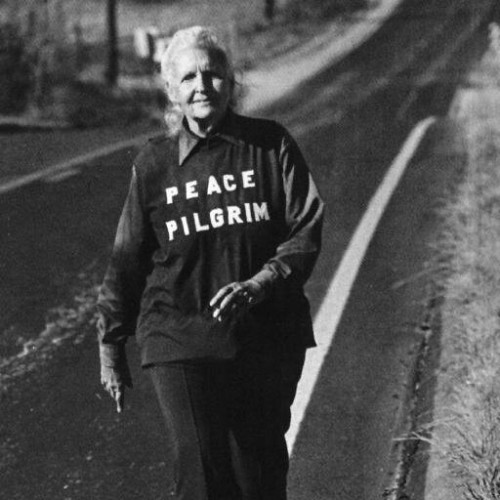
Written by Rachael Johnson.
Countless movies have been made about the military but very few about peace activists. Yes, there have been exceptions, such as Gandhi (1982) and Selma (2014), but the stories of soldiers- mostly white and male, of course- and their experiences of war have always been considered more worthy and thrilling than those of people struggling for peace. This has been a constant throughout the history of American cinema. From Wings (1927), the first movie to win a Best Picture Oscar, to American Sniper (2014), Hollywood filmmakers have demonstrated an abiding interest in telling and selling war tales. There is the dramatic, aesthetic argument, of course: cinematic story-tellers are naturally drawn to conflict and war is the ultimate expression of human conflict. War is, also, understood as an historical fact and war stories aim to address this unbroken feature of humanity. Obviously, human conflict should be explored by filmmakers but it must be understood that there is no such thing as an apolitical war story.
Although there have been American anti-war movies, most have been either confused in their messages, ideologically fraudulent, or downright militarist. It’s not just the obviously right-wing, propagandist products that promote a militarist culture and ethos. The lives of soldiers at war are generally understood as dramatically appealing and full of meaning, while military men are commonly portrayed as fascinating, charismatic figures. American mainstream cinema has not only provided a mirror to U.S. militarism; it has also reinforced it. Hollywood, it must be said, has never found peacemakers very interesting. Generally speaking, you have to go to independent and documentary films to learn about advocates of non-violence and pacificist philosophy.

The documentary Peace Pilgrim: An American Sage Who Walked Her Talk (2002) celebrates Mildred Norman (1908-1981), a remarkable woman who walked for peace for nearly 30 years. Calling herself Peace Pilgrim, New Jersey-born Norman travelled the United States from 1953 to 1981. Mahatma Gandhi said, “My Life is my message.” For Mildred Norman, her journey was her message. She was motivated by faith, namely a belief in “universal spirituality” and the “divine law of love.” In an old interview, Norman describes a spiritual awakening she had some years some years before her peace pilgrimage. Walking alone in the woods at night, she experienced, she says, a desire to surrender herself, and a calling “to give my life to something beyond myself.” Her life before had not been particularly unusual–she had been a fashionable young woman and had married. But she and her husband, Stanley Ryder, divorced after 13 years. Ryder says in an interview that she did not visit him when he was in the service and showed little interest in being a homemaker. Mildred Norman’s pacifist principles and independent spirit were already challenging convention. She was destined for another life.
It would be a while before she could realize her purpose, but in 1953, during the Korean War, Peace Pilgrim finally began her extraordinary journey. She took no money with her and carried only a comb, toothbrush, map, and pen. Peace Pilgrim says she experienced generosity and hospitality on her travels but on occasions when she did not get shelter and food from others, she fasted and slept outdoors. She spoke of both inner peace and peace for humankind. Her observations are often powerful. Consider the following statement: “What we basically suffer from in the world is immaturity. If we were a mature people, peace would be assured.” Many–on the left as well as the right–mock pacifists as strange, romantic creatures but whether you are a pacifist or not, there is no denying Peace Pilgrim’s strength of commitment to peace. Although she tragically died in a car crash in 1981, her message was kept alive by Friends of Peace Pilgrim who brought together her writings in Peace Pilgrim: Her Life and Work in Her Own Words.

Mildred Norman’s pilgrimage can be read as both politically and culturally subversive. To forsake money and possessions, and advocate peace in a militarist, materialistic society is a profoundly non-conformist act. Further, her pilgrimage denotes a rejection of social norms of post-war American femininity. Although she did not have a child and husband, Norman’s pilgrimage still represents a refusal of the domestic space and personal relationships for the life of the road. There persists a belief that women are more conservative in their lifestyle than the average man but Mildred Norman’s story is a reminder of the long, rich tradition of female radicalism and non-conformism.
Peace Pilgrim features period news footage, stills of newspaper clippings and old photos, as well as deeply felt commentary by cultural and religious figures inspired by her example. Maya Angelou, the Dalai Lama and actor Dennis Weaver all underscore that Norman literally embodied her message of peace. But the film aims, above all, to give voice to the woman herself and honor her pacifist teaching. We see Peace Pilgrim walking through the countryside and towns of America, lecturing in schools as well as being interviewed by reporters around the country. Produced by the Friends of Peace Pilgrim, and scripted and edited by Sharon Janis of Night Lotus Productions, Peace Pilgrim is a modestly made but valuable film.

We need more documentaries and movies about the lives of pilgrims and activists of non-violence. We also need to be reminded of their power and diversity. Incidentally, isn’t it time someone somewhere made a big, bold documentary about Code Pink, the colorful, dynamic, in-your-face American peace activists of today? Watching them disrupt the meetings of war criminals like Henry Kissinger is surely the stuff of great drama.




